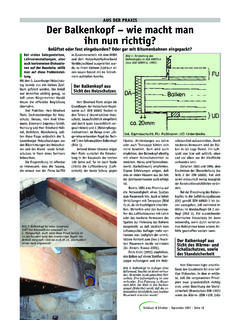Transcription of Senior Design Project Final Report
1 ESE 498 Electrical Engineering Senior Design Final Project Report Plug and Play Engine Sound Replicator Whitney flohr Electrical Engineering, Class of 2009 Jason Lin Electrical Engineering, Class of 2009 Table of Contents Abstract .. 2 Introduction .. 3 Project Priorities .. 4 Sensing RPM .. 5 Criteria .. 5 Car Adapter Plug .. 5 ODB II 8 Others .. 9 Processing RPM .. 10 Car Adapter Plug .. 10 ODB II 12 Sound Synthesis .. 13 Criteria .. 14 Design Choices .. 14 Memory .. 16 Audio Delivery .. 16 Ethical Concerns .. 17 Future Considerations .. 19 Conclusion .. 19 References .. 21 ESE 498 Senior Design Page 1 Abstract This Project was brought to the department by a third party member, Larry Heugatter, who noticed spark plug interference noise on his car radio that increased when he accelerated.
2 He conceived a device which would use this noise to generate engine sounds of a super car in sync with the car being driven. While spark plug noise was not a viable option of sensing RPM, two alternate methods were found. The first was alternator noise on the car adapter plug, an analog signal that can be processed into a digital signal. The second was the OBD II plug, available in most cars, that communicates on a digital serial protocol. Experimentation with sound files produced a groundwork for determining how many files of what size are necessary to produce a clean and realistic sound, as well as an idea of the memory and processing power that would be required. In the future, the individual components will need to be integrated into a system that does not require a laptop to process.
3 Other issues to explore are making the system wireless to avoid wire tangles, legal issues with using engine sounds, and the question of distraction. ESE 498 Senior Design Page 2 Introduction The motivation behind our Project was that many people wish to drive fast cars like Ferraris and Lamborghinis, due to their stunning looks, incredible speed, and harmonious sound. Currently there are options on the market for people to modify their everyday cars, including the use of expensive body kits, engine upgrades, or exhaust replacements for those who can't afford such vehicles. However, such modifications require time, money, and automotive experience. With the inspiration from Larry Heugatter, our Project began as an idea to bring the glorious sound of six figure super cars to everyday people with common cars, without the automotive experience or intense modifications.
4 Our goal was to find a quick, easy, and inexpensive way to give a mundane car the sound of a fire breathing supercar. In undertaking this Project , there were three major tasks to accomplish. First, we needed to find a way to monitor a car's RPM and then convert the analog output into a digital signal for processing. Second given a signal to process, there was the task of matching the RPM sounds of a difference car to create the sound effect of driving a high performance car. Lastly, when these two technical tasks were completed there would be an actual device that connects to the car, receives power, and emits sound either through a speaker or through the vehicle's built in audio system. ESE 498 Senior Design Page 3 Project Priorities The Project can be divided into several tasks.
5 We decided to focus our work on the individual components at the expense of working to combine them into a functioning prototype device. We felt using computers to handle processing and communication rather than dedicated hardware would make the Project more manageable in the time allotted. The first step was determining the current state of the car's engine, so that engine sounds could be matched to it. Because noise experienced by the driver is most closely correlated with the rate of the engine firing, or revolutions per minute (RPM), we sought to detect the RPM in a way that would fulfill the Project criteria. This portion of the Project required the majority of our research and experimentation, and was therefore a top priority of the Project . Second was processing the RPM reading into a useful signal.
6 Tested methods for sensing RPM would yield either digital and analog signals. In the case of digital signals, processing involves a well documented communication protocol. In the case of analog signals, conventional filtering and converting components are available as discrete components. As shown, processing can be done in a straight forward manner and was therefore not given as much priority as sensing. Lastly was the problem of synthesizing sounds to correlate with the processed signal. This involves a system to select a sound file to play based on the input signal and a delivery system for the audio. Because of the aforementioned de emphasis on interfacing components, most of this work focused on determining how to efficiently ESE 498 Senior Design Page 4 achieve good sound, determining the minimum resolution of sound files and focusing on a delivery system.
7 Sensing RPM Criteria The Design for sensing the car's rpm conforms to the following standards: The Design should be nearly universal. The sensing method/hardware should be compatible with as many vehicles as possible, either correcting for differences between different models and makes, or relying only on components and characteristics that are nearly universal. The Design should be Plug and Play . The sensing hardware should be installed easily with few, or ideally no, tools. Removal should be similarly easy. The installation should not involve opening any panels or getting under the hood: any parts should be confined to the car's interior. Installation and operation should not require extensive automotive knowledge. Car Adapter Plug The car adaptor plug, or cigarette lighter plug, is one of the two viable methods for remotely sensing the vehicle's RPM.
8 The plug is often used as a 12V DC power supply for small devices (phones, PDAs, etc.). Since the battery is connected do the alternator for charging, it experiences noise from the alternator's rectifier circuit when the engine is running. ESE 498 Senior Design Page 5 Measuring RPM through the noise from the alternator through the car adapter plug meets the criteria established in the previous section. While automotive electrical systems have become more advanced and better at filtering noise, it is never entirely erased, and usually correlates with filtering from the cord/device end. Therefore, we believe alternator noise has the potential to be measured form most cars. Furthermore, a car adapter plug is easy to install and uninstall, requiring no more automotive knowledge than installing and uninstalling a car charger for a cell phone.
9 Fourier analysis of the adaptor plug signal at different engine RPM is shown in Figure 1, Figure 2, and Figure 3 with the frequency of interest highlighted. kHz Figure 1: Fast Fourier Analysis of Plug Signal at Approximately 1000 RPM ESE 498 Senior Design Page 6 kHz Figure 2: Fast Fourier Analysis of Plug Signal at Approximately 1500 RPM kHz Figure 3: Fast Fourier Analysis of Plug Signal at Approximately 2000 RPM Aside from the DC component, there is a strong component that moves from 950Hz at idle (approximately 500 RPM) to at 2000 RPM. The frequency of this component correlates linearly to RPM over the range tested, where: RPM= *frequency ESE 498 Senior Design Page 7 OBD II Connector The OBD II (On Board Diagnosis Connector) is a standardized connector, shown in Figure 4, required on vehicles sold in America for all models after 1996.
10 The system can both store data, and provide real time read outs for various engine information such as engine temperature, speed, error codes, and RPM. Several different standards exist for the OBD II, outlined in Table 1. Model years 2009 and later will all use the CAN standard. Figure 4: Pin Layout of OBD II Connector Pin Usage on OBD-II Port by Standard Standard Usage Pins used Pulse Width Modulation Ford 2,4,10,16. Variable Pulse width Chevy 2,4,16. ISO 9141-2 European and Asian 4,7,15,16. Models KWP200 4,7,15,16. CAN Mandatory Standard 4,6,14,16. for 2009 and beyond Table 1: Pin usage and manufacturers by OBD II standards Though many standards are used, there are parts available that convert the signal into a serial binary in RS 232 standard. Specifically ELM electronics produces a chip that automatically senses the standard being used based on pin activity.




